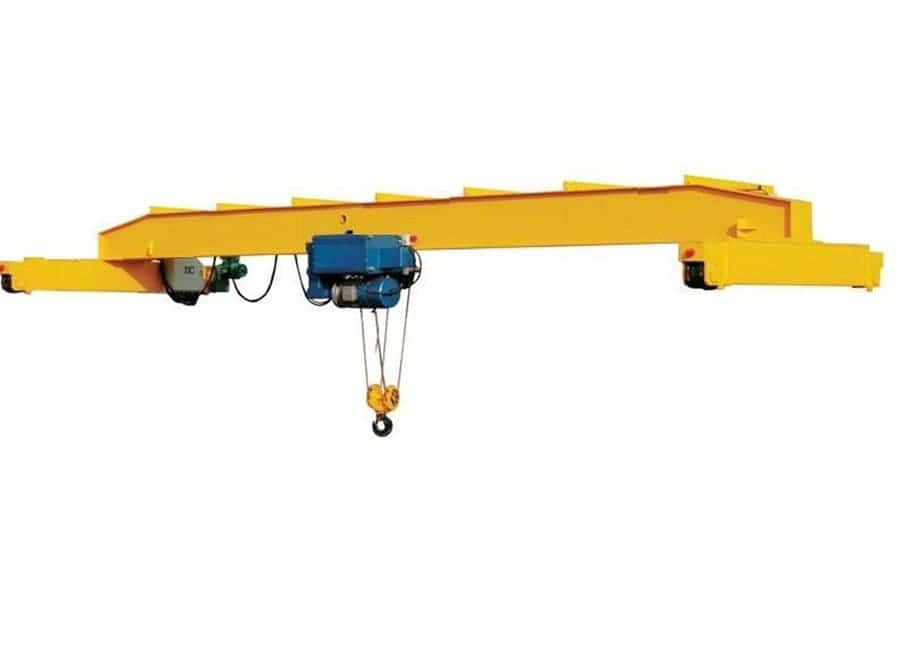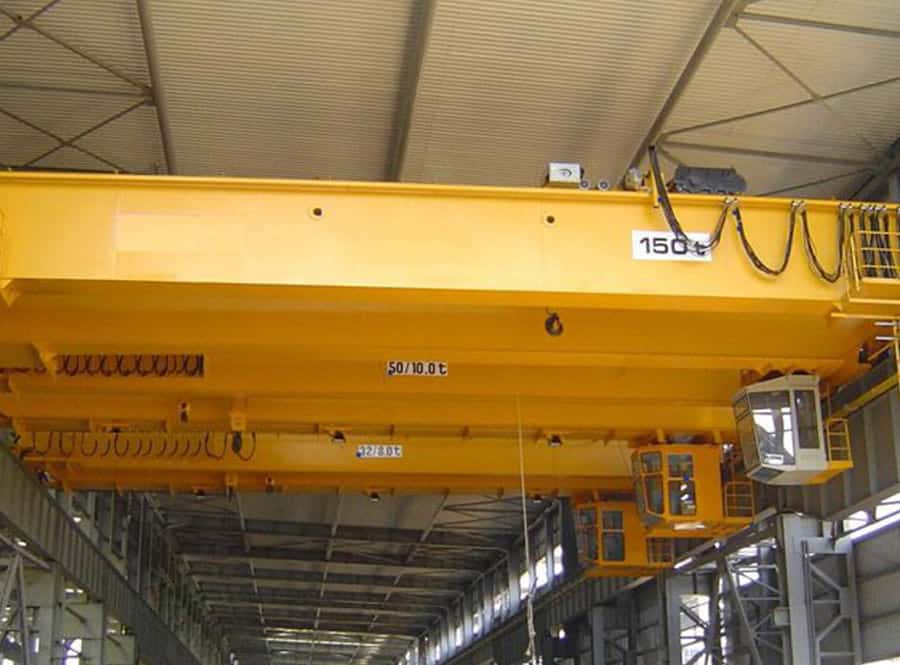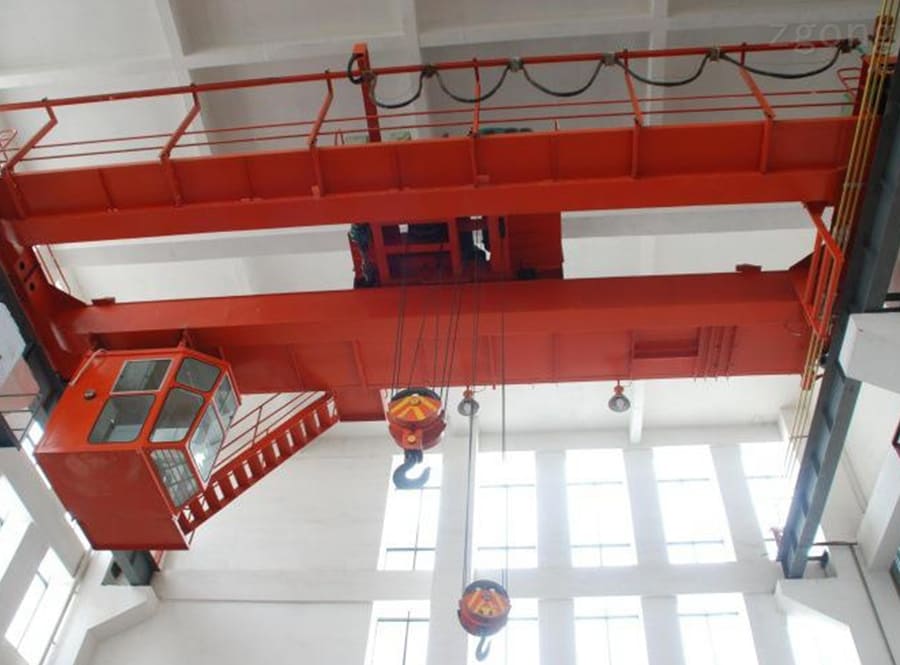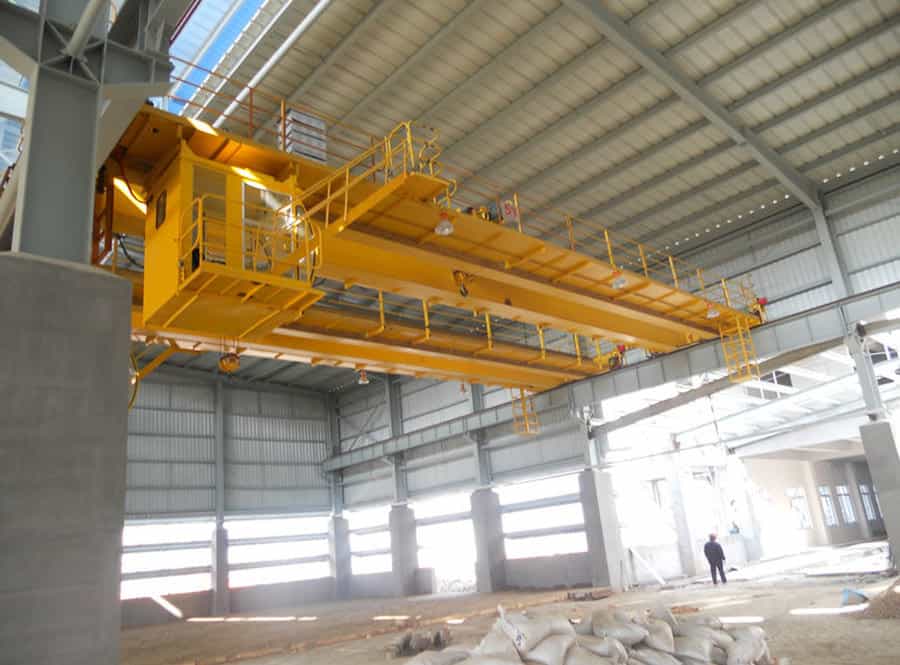Bridge crane is a major lifting and transportation equipment in the production logistics process, and its utilization efficiency is related to the production rhythm of the enterprise. At the same time, bridge cranes are also dangerous special equipment and may cause harm to people and property in the event of an accident.
The driver of the overhead crane is the most active and critical factor in the use of the 桥式起重机. The driver’s ability to operate the overhead crane is very important and is a major issue directly related to the company’s efficiency and safe production. The author summarizes his own practical experience in operating bridge cranes and puts forward the following operating experience based on the characteristics of bridge cranes.

1.掌握设备及工作对象的特点
To correctly operate a bridge crane, you must carefully master key elements such as the equipment principle, equipment structure, equipment performance, equipment parameters, and operating process of the equipment you are operating. These key factors are closely related to the use and operation of this equipment.
1.掌握设备原理
认真理解原理是设备良好操作的前提和基础,只有原理掌握清楚、深入,理论基础打好,理解才能清晰深刻,操作水平才能达到一定的高度。
2.认真掌握设备结构
认真掌握设备结构,就是必须了解和掌握桥式起重机的主要结构部件。桥式起重机是一种特种设备,其结构有其特殊性,必须认真了解和掌握。认真掌握设备结构是熟悉设备、熟练操控设备的关键。
3.认真掌握设备性能
认真掌握设备的性能,就是要掌握桥式起重机各机构的技术性能,如电动机的动力及机械性能、制动器的特性制动状态、安全保护装置的安全技术性能等。只有掌握了性能,才能更好地因势利导,科学控制设备,延缓劣化过程,防止和减少故障的发生。
4.认真掌握设备参数
认真掌握设备参数就是要了解和掌握桥式起重机的主要技术参数,包括工作类型、工作级别、额定起重量、机构工作速度、跨度、起升高度等。每台设备的技术参数往往都不一样,根据设备的技术参数不同,其性能也有所差异。认真了解每台桥式起重机的准确参数值,对准确操作设备至关重要。

5. 认真掌握工作流程
Carefully mastering the operation process means mastering the steps and processes of the production operations served by the bridge crane, and striving for the best design and reasonable operation of the lifting and transportation procedures used in various processes. Only by proficiently mastering the process flow can we master the operation rules, be confident and operate freely, so as to improve work efficiency, safety and reliability.
2.掌握设备状态变化
这 桥式起重机 is special equipment, and the operation and operation must ensure the technical status and intact condition of the bridge crane. During the operation of bridge cranes, they are affected by factors such as production conditions and environment. The functions and technical status determined during the original design and manufacturing may continue to change and be reduced or deteriorated. Therefore, the driver must carefully grasp the status changes of the equipment, conduct good operation control of the bridge crane, and perform maintenance and inspections carefully to prevent and reduce failures.
1.认真掌握设备状态变化
设备需要精心保养。按照保养制度的要求,定期对桥式起重机各部件进行清扫、清洁、润滑、调整、紧固等工作。及时处理随时出现的各种问题,改善设备运行状况,防患于未然,避免造成不应有的损失。实践证明,设备的寿命很大程度上取决于保养的程度。
2.认真掌握设备状态变化
认真掌握设备的状态变化,能够对设备进行检查。了解和掌握桥式起重机经常需要检查的部位,掌握检查这些部位的方法和手段。
3. Skills in monitoring equipment through senses
Skills in monitoring equipment through the senses, i.e. seeing, hearing, smelling, touching and feeling. “Visual” means to use vision to observe the surface of the equipment in order to detect intuitive defects and failures. “Listening” means relying on hearing to detect the status of the device. The driver operates in the cab and cannot see the operating conditions of the equipment on the bridge. Hearing becomes an important auxiliary safety means. When electrical appliances or mechanical equipment are operating normally, they generally only emit very light harmonic sounds, but when they are malfunctioning, they will make abnormal noises. Experienced drivers can determine the approximate location of the fault based on the different changes in the sound. Therefore, identifying diseases by sound should be one of the internal skills of a driver. “Smell” means relying on the sense of smell to detect the status of the device. The electrical coil of the bridge crane catches fire, and the brake pads smoke and emit a pungent odor that can be smelled from a distance. If you find any peculiar smell, you should stop the vehicle immediately for inspection to avoid causing fire or other major equipment accidents. “Touch” is to diagnose the abnormal status of the equipment through hand feeling. Drivers sometimes encounter abnormal conditions in equipment and are able to diagnose and determine the cause of the malfunction. “Jue” here refers to feeling or feeling. Drivers will feel information from all aspects when operating, and experience will tell you what is normal and what is abnormal. When drivers find that they feel different from usual at work, they should immediately trace the source to avoid future troubles.
3. Communicate carefully with ground support personnel
The use of operating 桥式起重机 to complete lifting tasks requires the cooperation of many people such as drivers, commanders, and rigging personnel. Sometimes its operating scope also includes other equipment and operators, so as a driver, you must carefully work with the ground. Communicate and cooperate well with the personnel. The work objects, equipment status, work instructions, and operating environment must be confirmed before proceeding.
The driver must confirm the command language with the ground personnel before operating. If the command language is not agreed upon, the operation cannot be carried out. The driver must concentrate when operating and operate according to the commander’s signals. Before each operation, the driver should ring the bell to remind the personnel at the operation site to pay attention. At the same time, pay attention to the situation around the lifting objects. No one is allowed to stay under the hoisted object, under the arm, or in the area where the hoisting weight rotates. When the line of sight between the driver and the hoisted object may be blocked during hoisting, the driver should carefully inspect the on-site environment within the hoisting range and confirm the hoisting path of the hoisted object before hoisting. During the hoisting process, the signal contact with the commander should be strengthened. At the same time, the commander should stand within the driver’s line of sight to give commands to avoid hoisting safety accidents due to blocked sight. If there are only drivers and hookers working on site, the driver must work closely with the hookers and work in unison. When moving and lifting heavy objects, you should only follow the signal given by the hooker. However, no matter who sends the “stop” signal, you should stop immediately.
4. Correctly determine the nature of the emergency and take appropriate emergency response measures.
Bridge cranes are dangerous equipment and may cause property damage and casualties once they are out of control. As a driver of an overhead crane, you should correctly judge the nature of the emergency and take appropriate emergency response measures. It is a must-have skill to avert danger or minimize accident losses in dangerous situations.
The emergency state of the 桥式起重机 can also be called the state of the bridge crane approaching danger. It is characterized by the sudden appearance of equipment (device) in a dangerous, failed, and out-of-control state. Improper handling will cause the consequences of an accident. There are many types of emergency situations for bridge cranes. The most likely ones include failure of the lifting brake mechanism, sudden power loss of the crane, loss of control of the trolley control mechanism, broken wire rope, crane fire, lifting limit failure of the lifting mechanism, etc. situation. We should be fully prepared in terms of ideological understanding and establish emergency plans for various possible dangers.
In addition, you should also have a clear understanding of the production operation procedures, so that you can better cooperate with the work and avoid accidents. For example, if the hoisting brake fails when there is a heavy object on the crane hook and the heavy object slides down, the driver should continuously ring the bell or whistle to signal all personnel on site to avoid it.





















